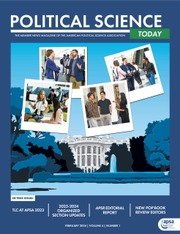Frank Safford, who died on June 16, 2022 at the age of 87, was a social scientist’s historian. He made sense of history through theory, and he generated sensible theory through the study of history.
Safford’s second book, enviably titled The Ideal of the Practical (University of Texas, 1976), exemplifies this synergy. The Ideal of the Practical takes aim at those who would explain Colombia’s delayed industrialization by pointing solely to “cultural factors” or “societal values” such as the country’s alleged disdain for manual labor or its purported worship of legal studies. Safford shows instead that topography and external economic conditions often conspired to make manufacturing (and even mechanized agriculture) unprofitable in nineteenth-century Colombia. It was cheaper to ship goods 8,000 miles from Liverpool to the head of the Magdalena River, in central Colombia, than it was to move them from there up through the mountains to Bogotá, less than 100 miles away. When these constraints lifted—as new transportation technology conquered the Andes, and as the world grew addicted to coffee—Colombia quickly responded. No “backward culture” barred the way.
Like so many of Safford’s ideas, these still feel fresh. Current work on economic growth often echoes The Ideal of the Practical. One hot-off-the-press working paper, for example, argues that the professionalization of engineering in Britain was key to sustaining the gains of the industrial revolution (Hanlon 2022), bringing to mind Safford’s emphasis on the rise of Colombian engineers: the growing number of engineering students at top universities, the proliferation of engineering specialities (industrial, petroleum, chemical, etc.), and the eventual ascendance of engineers to the highest social ranks and to cabinet appointments lie at the center of Safford’s story of Colombian development.
Another new paper uses a rich quantitative data set to classify Bogotá in 1800 as “self-sufficient,” meaning that Bogotanos had all the food they needed within arm’s reach, and argues that self-sufficiency was (perhaps paradoxically) bad for long-term economic growth (Haber et al. 2022). Safford, writing nearly half a century ago, alighted on the same theme. He quotes a nineteenth-century visitor who observed that ``there is not perhaps a place in the world which can provide for itself the elements necessary to enjoy such an absolute independence and and isolation from the rest of the world." Self-sufficient, indeed. As for the long-term consequences, Safford writes: “This superficially ideal situation tended to stultify the economy, discouraging the development of a national market … as it was possible to get along using the products of the immediate area, there was not a strong imperative to improve roads.”
In The Ideal of the Practical, as in his other work and his teaching, Safford deftly defends his thesis with vivid detail about individual nineteenth-century Colombians. He claims that the Colombian elite of that era, far from rejecting technical education, often promoted it. As evidence, Safford introduces us to men like Mariano Ospina, who was then Secretary of the Interior and who later served as president of Colombia. Writing to his sons—one of whom became head of state, another of whom fathered a third President Ospina—Mariano Ospina exhorted them not to take up “overrefined” subjects like higher mathematics; impractical sciences like zoology; or literature, “which tires the mind without profit.” Instead, Ospina wished his sons to pursue mechanical engineering: “not so much theoretically as practically,” which is to say, he wanted them to man pulleys, saws, water wheels, mills, and “the construction of wooden bridges, etc.”
These details—the tone of Ospina’s letters, his liberal use of “etc.”, the texture of his parental aspiration—are often considered the province of the humanities, useful for the political scientist (even the qualitative political scientist) only as background, or to enhance readability. Safford shows us that these seemingly minute details are the best way to truly understand and evaluate his proposal that substantial faction of the Colombian elite embraced “the ideal of the practical.”
Safford also set an example of how to engage with other people’s research. The Ideal of the Practical never trucks in backhanded compliments or accusations. And yet throughout the text there runs an undercurrent of gentlemanly indignation at those who “so confidently pronounce judgment on other cultures,” as he puts it. For colleagues who had merely done fieldwork in Colombia—rather than living there, loving the country, and returning regularly over the course of an entire life, as Safford did—he has gentle reminders (“It is well to remember also that not all the plans of Latin Americans go awry”) but no slights. On that count, Safford was ahead of his time, keenly aware of his positionality as a gringo writing about Latin America, conscious of the privilege of being let into someone else’s society. But he was never sanctimonious, in writing or in person. Pancho—as he was christened by his nanny in El Paso—was warm and welcoming and exuberant.
Pancho is survived by his brilliant wife, Joan Safford; by his two children and their partners, whom he adored; by his beloved granddaughter; and by countless lucky students, including me.


